
The Perfect gift for your Graduate
Christmas is upon us and you might still be looking for the perfect gift to give your new or soon-to-be graduate. Whether he or she is a high school or university graduate, the option to travel abroad and explore a new culture can be a highly enriching event as well as an opportunity for personal growth that will certainly come in handy for the rest of their life. For parents or grandparents, gifting a trip is also a great way to reward students for years of hard work as well as provide continued encouragement for the road ahead.
WHY A TRIP TO ITALY?
Since ancient times, Italy has been a hub for history, art, and culture. Centuries-old palaces, churches, squares, castles, and archaeological sites that testify to Italy’s immense wealth are all waiting to amaze visitors. When you add the fact that Italy is home to many paradisiacal natural havens, outstanding food and wine, a zestful culture, and superb fashion, there is no doubt that a young adult will have plenty to appreciate during a trip to Italy. From the historic treasures of Rome and Venice, the artistic legacy of Florence, and the relaxing sceneries of the Tuscan or Piedmontese countryside, to the stunning coastal panoramas of Cinque Terre and the Amalfi Coast, Italy has every type of location to provide your new graduate with an exceptional and balanced travel experience. Read ahead to see some of our favorite spots fit for a graduate’s journey full of adventure.
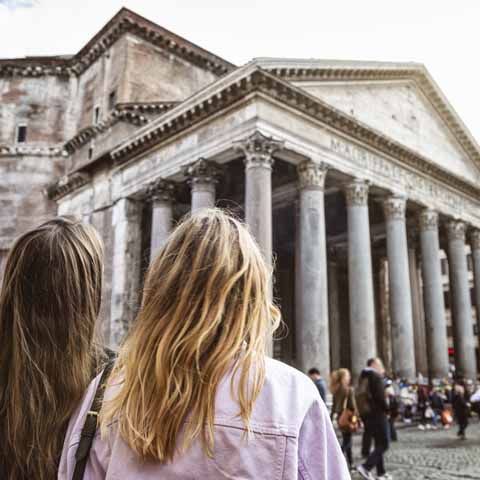
ITALY FOR ART AND HISTORY BUFFS
Rome
Rome with its nearly 3,000 years of history is without a doubt a great fit for young adults to delve into Italy's rich past. While it's mostly known for ancient Roman ruins like the Colosseum, the Roman Forum, and the Pantheon, the Eternal City is also home to a stunning collection of Renaissance, Baroque, and Neoclassic art.
The Vatican Museums and St. Peter's Basilica alone possess a priceless concentration of masterpieces, which include Michelangelo's frescoed Sistine Chapel, the captivating Pietà, and the Raphael Rooms. At the Capitoline Museums, visitors will have the opportunity to dig further into Rome's ancient history, while the Borghese Gallery will astound with its impressive collection by world-renowned artists, such as Titian, Caravaggio, Canova, and Bernini, to name a few.
Still, even the most serious sightseer will need time for some light-hearted activities. After all, this is a reward for long days and nights filled with studying. Does a food tour through Rome's historic trattorie, pizzerie, and gelaterie sound appealing? Or a day trip to Frascati to taste the "Golden Wine of the Romans"? After sunset, the buzzing Trastevere neighborhood is full of life, making it the perfect place to enjoy dinner and drinks among the locals.
Naples
A short train ride from Rome, Naples is one of Italy's most historic areas. Famously known for its lively culture, emphatic citizens, and—must we mention—where the world's first pizza was created, this lively city has a rich and long history going back some 4,000 years. In fact, Naples is one of the world's oldest cities.
Founded as an ancient Greek colony, Naples quickly grew to be one of Magna Graecia's most important cultural centers. Eventually, Naples became a Roman city before the Empire's fall, after which it went through numerous dominions including the Ostrogoths, Byzantines, French, and Spanish, as well as a stint as an independent Duchy. Through the Unification of Italy, Naples flourished as the capital of the influential Kingdom of Naples, which dominated Southern Italy from the 13th to the 19th centuries. While the Kingdom of Naples passed hands many times, each settlement left iconic marks that can still be seen today.
With a remarkable historical heritage reflected through stunning palaces, churches, museums, grand squares, and castles, history buffs will be stunned to take it all in, accompanied by a skilled local guide. Plus, just a 30 minute drive outside the city, lies Pompeii, which is famous around the world as the site buried by the Vesuvius eruption of 79 AD. While scenes of the plaster casts of the corpses buried alive can be overwhelming, exploring the rest of the excavations, including the amphitheater, the forum, the thermal baths, homes, and villas containing impressive frescoes and mosaic flooring, and other artifacts, is truly a sight to behold.
Art lovers will be mesmerized by the incredible and realistic details of the Veiled Christ inside of the small Chapel of San Severo. The marble sculpture by Giuseppe Sanmartino is one of the world's most remarkable masterpieces and a must-see attraction when in Naples. Other top sites include the awe-inspiring Cloister of Santa Chiara, a perfect escape from the city's chaos, as well as the striking Royal Palace, which dates to the 1600s.
A visit to Naples wouldn't be complete without experiencing what an authentic pizza should taste like at one of the city's historic "pizzerie". But, before indulging in the local delicacy, fun seekers will want to make their way to Piazza Bellini where the young locals gather and fill the café-lined square to socialize over the aperitivo.
Florence
With its masterful Renaissance architecture and countless artistic treasures waiting around every corner, Florence is a must for art and history enthusiasts. While exploring the city’s cobblestoned streets, graduates can follow in the footsteps of famed historical figures, such as Leonardo da Vinci and Michelangelo, to name just a few.
Florence is home to an abundance of art museums, but two of the most notable are the Uffizi Gallery and the Accademia Gallery. Here, graduates can take their time admiring many of the masterpieces they studied during art class, such as Botticelli’s The Birth of Venus and Michelangelo’s David. Of course, visitors to Florence must also see the famous Cathedral of Santa Maria del Fiore with the impressive dome designed by architect Filippo Brunelleschi and the ornate bronze doors of the Baptistery by Lorenzo Ghiberti, dubbed “The Gates of Paradise” by none other than Michelangelo.
Speaking of churches, if there’s a place in Italy where one must dedicate time to admire several churches, it’s Florence. In addition to the monumental Duomo, other must-see churches include Santa Maria Novella and Santa Croce, which is the burial place of Florence’s most important figures, including Michelangelo, Machiavelli, and Galileo. Also of note are the Medici Chapels, which house the remains of the Medici nobles. However, this is only a scarce list of religious sites turned museums whose interior art, created by the likes of Giotto, Ghirlandaio, Ghiberti, Donatello, and many other masters, one must witness.
In addition to the city’s art and history, graduates will enjoy soaking up Florence’s unique culture, which to this day remains influenced by the Medieval and Renaissance periods. The city center is filled with historic shops and boutiques where traditional crafts have been made by hand for centuries. Among the most renowned is the Florentine leathermaking tradition. An array of leather products can be found from market vendors to upscale boutiques and everything in between to suite all types of budgets. Both young men and women will enjoy purchasing a Florentine leather wallet or handbag as the perfect souvenir, or perhaps a briefcase or computer bag, to prepare for the start of a new career.
Just outside of Florence are countless gems waiting to be discovered in the breathtaking Tuscan countryside. Spend a day visiting charming Chianti wineries and picturesque villages tucked away amid gentle rolling hills. More adventurous travelers can even tour the area aboard an iconic Vespa or a vintage Fiat 500, both of which are sure to add local charm to the experience.
Students may also wish to visit Pisa, which is home to not only the famed Leaning Tower, but also one of Italy’s esteemed universities that dates back to the Middle Ages. Other highlights include Siena, famous for its biannual Palio horse race, and Lucca, renowned for its intact defensive walls and elliptical main square. Along the way, graduates can indulge in the highly-revered Tuscan cuisine, which is composed of seasonal, local ingredients that impart unforgettable flavors.
Venice
Without a doubt, Venice ranks at the top of any traveler’s list when planning to visit Italy. With roughly 100 tiny islands connected by 435 bridges, this city is one of the world’s most unique. Designated as a UNESCO Heritage site, the Floating City has a long and rich history that one must take in at least once.
Referred to as “La Serenissima” or “the Most Serene”, Venice’s history goes back even farther than the 5th century, which marks the first recorded evidence of settlements in the lagoon. Like other important Italian cities, Venice underwent periods of invasions and attacks. Notably, the Byzantines dominated for centuries until Venice gained partial independence in the 8th century. The city flourished through the Middle Ages as an important global trading port and noble Maritime Republic reaching its peak in the 15th century. Many of La Serenissima’s most affluent citizens became patrons of the arts by transforming Venice into a hub of artistic culture.
Today, impressive patrician palaces, churches, and other centuries-old buildings bear witness to Venice’s important history and wealth. Visitors will gasp at the stunning gold mosaic Byzantine-style St. Mark’s Basilica. Inside the pink and white-marbled Palazzo Ducale, which is the former residence of the doges who ruled over the island for more than 1,000 years, graduates will be amazed both by the opulent artistic and architectural details as they listen to interesting tales of events that took place inside. To know that Italy’s most famous playboy, Casanova, once had his prison cell inside the palace makes it all the more interesting. While it may be the least splendid of sleeping quarters, a tour of the palace will show visitors Casanova’s cell from where he made his impressive escape.
Venice’s influence in the arts beams wherever visitors turn. Through beautiful gothic palaces turned museums, events such as the Biennale or annual Film Festival, to nights of opera at the famed La Fenice Theater, Venice is the right place for young dilettantes. Despite all the splendor, don’t confuse Venice with snobbery, in fact, the annual Carnival of Venice is renowned all around the world for being one of the most spectacular and welcoming celebrations of all.
Each February, revelers from all over come to Venice to celebrate its rich and noble history dressed in the most elaborate and beautiful costumes and wearing iconic Venetian masks. Other traditional celebrations such as the Feast of the Redeemer in July and the Historical Regatta in September are important occasions in which all attention is turned to Venice. Locals and guests alike will enjoy the events taking place along the Grand Canal and the phantasmagoric display of fireworks that light up and reflect into the city’s historic domes, bell towers, and the lagoon.
Whilst not many may wish to visit Venice during premium Carnevale or other celebratory periods, Venice is always full of charm. At any time of the year, getting lost through the city’s historic “calle”, or tiny alleys, can turn into an adventurer’s most thrilling experience while getting to know the real Venice. An excellent way to rub shoulders with locals is to partake in a tour discovering Venice’s tradition of the “bacari”, which is an ancient Venetian term for a typical tavern. Venetians on the go would stop in at their favorite “bacaro” to enjoy delicious bite-sized finger snacks typical of the area called “cicchetti” and meant to be enjoyed with a great glass of wine from Venice’s surrounding wine regions or a spritz.
Another activity to enjoy while in Venice is a day excursion to the picturesque islands of Murano, Burano, and Torcello, each offering its own special trade and charm. In Murano, visitors can see how the ancient tradition of hand-blown glass is still practiced to this day. Burano, a small and ancient fishing island once famous for its generations-old lace-making tradition and bright colorful houses, is now one of Italy’s most Instagrammable sites. Lastly, Torcello, the furthest of the islands, can be a quiet paradise in comparison to Venice or the other islands. Its main attraction is the 7th century Cathedral of Santa Maria Assunta which contains beautiful Byzantine mosaics from the 11th and 12th centuries.
With an extraordinary wealth of artistic and historic treasures, a unique culture that moves by boat, and a delicious local cuisine and excellent regional wines, graduates will surely grasp what makes Venice so remarkably special.
Verona
As the city that inspired William Shakespeare’s timeless Romeo and Juliet and The Two Gentlemen of Verona, Verona is a literate person’s city. It is also the city that adopted Dante during his exile from Florence and where he wrote De Monarchia as well as part of Paradiso from the Divine Comedy.
With a 2,000-year history, this former Roman colony is renowned for its incredibly well-preserved architecture and cultural sites, which make the historic city of Verona a UNESCO World Heritage Site. But above all, Verona has a special beauty and elegance that perfectly blends in harmony with its unique energy, attracting many young visitors each year.
Some of the ancient Roman sites include the old town nestled across the Adige River, the Porta Borsari (the ancient city gate), the remains of Porta Leoni, the Arco dei Gavi, the Ponte Pietra, the Roman theater, and the well-known Arena amphitheater, which today hosts the city’s Opera Festival in the summer and other musical concerts throughout the year.
Of the predominantly Medieval historical center of Verona, young travelers can delight in sites such as Castelvecchio, the 14th century castle, as well the vibrant Piazza Bra, the splendid Piazza delle Erbe, and Piazza dei Signori, the latter of which is encircled by impressive historic buildings including Palazzo del Comune, Palazzo del Podestà, Loggia del Consiglio, the Scaliger Tombs, and Domus Nova. One special site truly unique to Verona is Juliet’s House, which continues to attract lovers from around the world.
After taking in the many historic sites of the city center, young travelers might enjoy a visit to the verdant countryside surrounding Verona. Within the province of Verona lie several areas renowned for their wine, such as the Soave area and the Valpolicella area (home of the esteemed Amarone wine). Even without wine tasting, a day spent among the lush greenery of the countryside or exploring the Lake Garda area would provide the perfect respite for nature lovers.
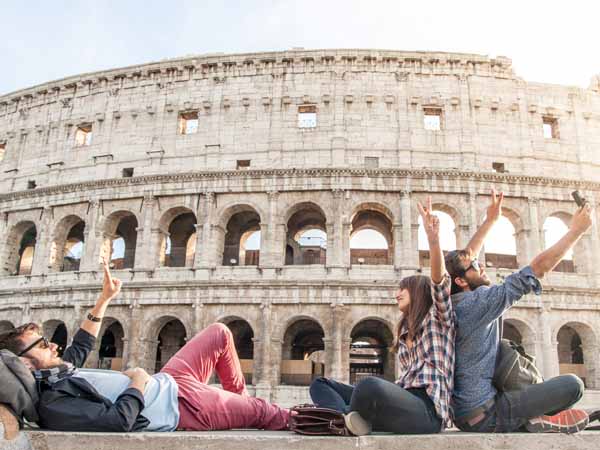
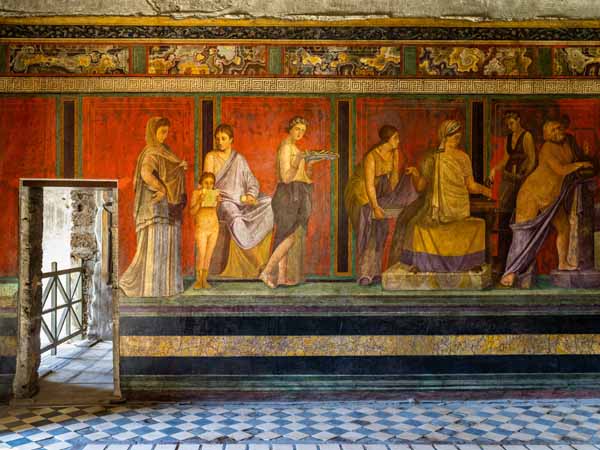
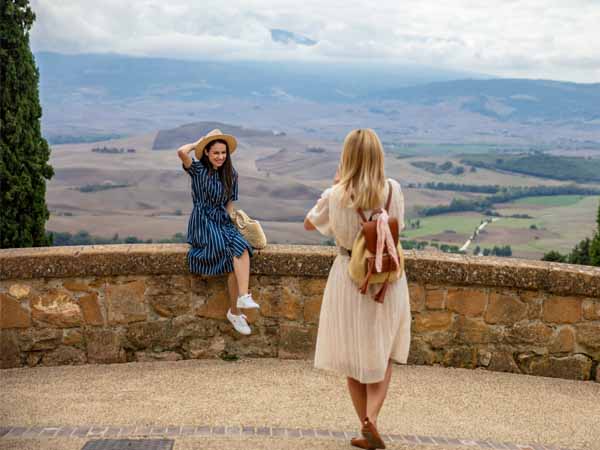
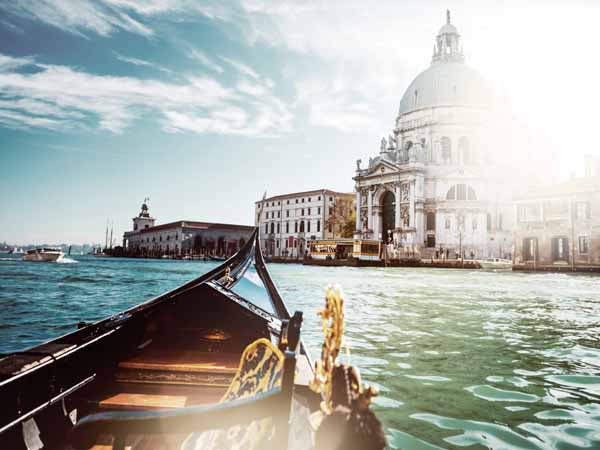
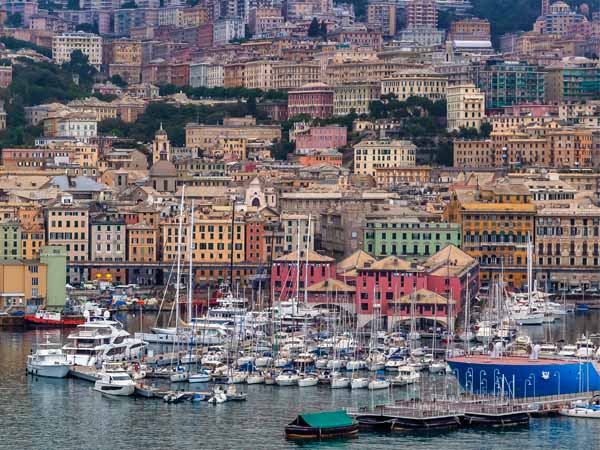

ITALY FOR FOOD AND WINE ENTHUSIASTS
Aside from the multitude of historical and artistic contributions, perhaps one of Italy’s most significant gifts is its food and wine. Finding someone who doesn’t love pasta or pizza is difficult, even among the most disciplined health enthusiasts. And who doesn’t love a great bottle of Chianti, Brunello, or Soave wine? But Italy’s quality wines and regional cuisine go far beyond what most of us have ever tried; these delicacies offer anyone with a taste for the simpler, yet finer things, an unparalleled food-centric experience.
From north to south, Italy is ready to welcome graduates with exquisite and unforgettable flavors, but when you mix legendary food and wine traditions with the vibrancy of certain cities, there are definitely places more than perfect for younger foodies.
Emilia Romagna
Starting in Emilia Romagna, the region where some of every Italian home’s biggest staples, like Parmigiano Reggiano cheese, Prosciutto di Parma, and traditional Balsamic Vinegar of Modena come from, visitors are bound to have a remarkable experience in Italy’s gastronomic capital. Then there are lasagna and tortellini among several other fresh egg-pasta based dishes we all love that were conceived here. The list goes on to include some of the tastiest salumi in all of Italy. Aside from the world-renowned Prosciutto di Parma, other cured meats to try when in Emilia Romagna are mortadella and the flavorful Culatello di Zibello.
With all of these high-quality products, it’s worth mentioning that this enchanting region rich in art and history, castles, and impressive Renaissance architecture, was the first region in Italy to adopt a strict criterion dedicated to the production of quality controlled food products. Known as the PDO (Protected Designation of Origin) and PGI (Protected Geographical Indication) labels, products made here and throughout Italy, which carry such designations, respect ancient and strict traditions to achieve excellence and high quality.
Bologna, the region’s capital, makes a great base for new graduates. The city is famous for having the western world’s oldest university founded in 1088, which draws students from all over Italy and the world. Despite the city’s rich medieval historical center, Bologna has a bustling youthful energy and offers plenty of opportunities to immerse in both its rich food traditions, art and history, and a lively atmosphere from day to evening. Other cities worth the stop when in the area are Parma, Modena, Piacenza, Ferrara, or Ravenna, each possessing some of the region’s most stunning artistic treasures.
Graduates with a passion for motorsports are sure to fall in love with the Emilia Romagna region for a second reason. Known as the Motor Valley, Emilia Romagna is home to an impressive number of luxury car manufacturers, race tracks, car museums, and motorcycle manufacturers. Big names like Ferrari, Lamborghini, Ducati, Maserati, and Pagani all call Emilia Romagna home. Whether it’s catching a race at the Imola track, test driving a Ferrari at the Autodromo di Modena, or exploring the Lamborghini Museum, Emilia Romagna offers plenty of exciting opportunities for car lovers and thrill seekers alike.
Piedmont
When it comes to excellent food and wine, the Piedmont region is not too far behind Emilia Romagna. In fact, Piedmont is the birthplace of the Slow Food movement, an organization that promotes and preserves local food and traditional cooking methods.
As the capital of the region, Turin is the first stop for most visitors to Piedmont, and this city rightfully deserves its spot at the top of your graduate’s travel list. Turin’s past is rich and illustrious, with the city serving as the former home of the Savoy royal family and the first capital of the unified Kingdom of Italy.
Between admiring royal palaces, visiting world-renowned museums (such as the Egyptian Museum), and spending time in the Cathedral of St. John the Baptist (home of the famous Shroud of Turin), young travelers will enjoy tasting the many culinary delights native to Turin and the surrounding area. Piedmont’s cuisine features fresh pasta (such as tajarin and agnolotti) as well as supreme meat dishes, remarkable local cheeses, and a plethora of rich, locally-sourced ingredients, such as mushrooms and truffles.
And then there’s dessert. Turin’s historic pastry shops are a must see for lovers of chocolate, pastries, and other sweet treats. Once a gathering place for intellectuals of the royal court and other historic figures, Turin’s pastry shops and cafés are among Italy’s finest. Additionally, Turin’s chocolate tradition is long-standing and it’s believed that Turin was the first city in Italy to develop a method of producing solid chocolate.
Travelers who venture outside of Turin will be rewarded with culinary experiences unlike any other. For instance, the town of Alba is home to the rare white truffles that are such an integral part of Piedmont’s cuisine. Then there’s the hilltop town of Bra, which is surrounded by vineyards. Bra is the headquarters of the Slow Food movement and its historical center exclusively features small, family-owned shops filled with local specialties that graduates will love.
Of course, it’s impossible to speak about Piedmont’s gastronomy without mentioning the wine. In fact, Piedmont is one of Italy’s most renowned wine regions. Wine lovers will fall in love with the Langhe and Roero areas, which are the home of eminent wines including Barolo, Barbaresco, Barbera, and Roero, to name just a few. While exploring the hills of Piedmont’s countryside, it’s very likely that your college graduate will find his or her new favorite wine.
Genoa
Northern Italy’s Liguria region is perhaps best-known among Italians and international visitors for its beaches and historic coastal towns. With stunning gems like the Cinque Terre and Portofino, Liguria offers many unique areas for young travelers to soak up the sun and admire jaw-dropping seaside landscapes.
The region’s capital, Genoa, is a bustling modern city with a long history as a former Maritime Republic. Wandering about the city’s characteristic carruggi, sightseers will be pleasantly surprised at all the magnificence hiding behind these seemingly shady narrow alleys.
In addition to being the birthplace of Christopher Columbus, Genoa is renowned for its historic palaces, stately squares, the magnificent 900-year-old Cathedral of San Lorenzo, and the impressive Acquario di Genova, which is the largest aquarium in Italy.
Genoa is also a university city and the revitalized old harbor area serves as the center of social life where graduates can mingle with the locals and try delicious regional specialties at centuries-old restaurants. The Liguria region is renowned for its pesto (a fragrant sauce made by grinding only the freshest basil with pine nuts, salt, garlic, extra-virgin olive oil, and cheese), and Genoa is undeniably the home of pesto.
Another beloved treat is focaccia, a golden flatbread so delicious that it can be described with only one word—addicting! Countless varieties of focaccia are made throughout the Liguria region, and the rest of Italy, but the true original is focaccia genovese. Topped only with salt and olive oil, this simple, yet delicious flatbread will live on in your graduate’s memories for years to come.
For another special treat, graduates can visit Recco, home to a unique variety of focaccia that can only be tasted in Recco. Focaccia di Recco is made by stuffing two very thin sheets of dough with local crescenza cheese. The result is a light, crispy, cheesy focaccia meant to be eaten right of the oven that is beloved by locals and international visitors alike.
Of course, this is only a brief list. While exploring Genoa and the Liguria region, graduates can look forward to trying other regional culinary staples including fresh seafood, local vegetables, and aromatic wines (such as Sciacchetra and Vermentino).
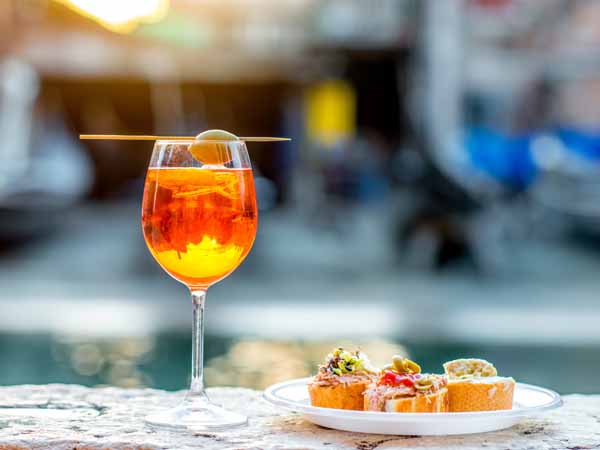
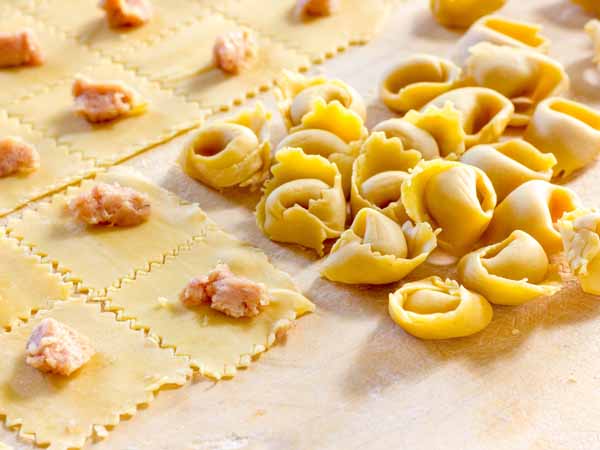
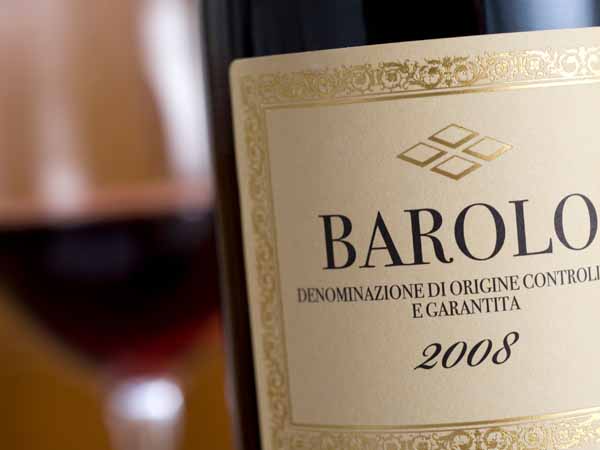
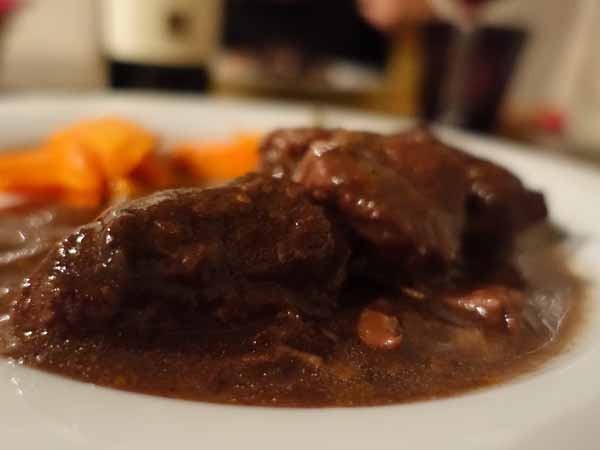
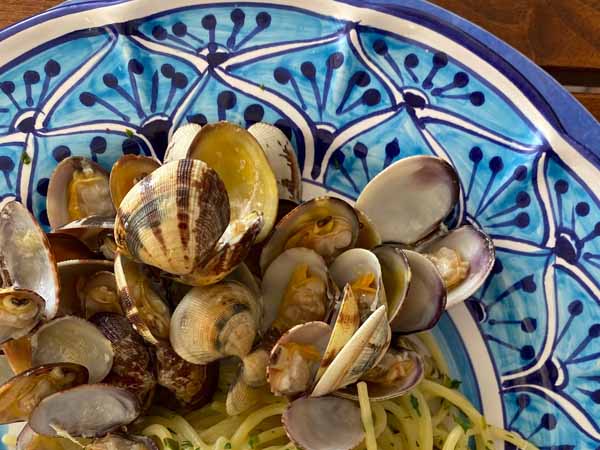
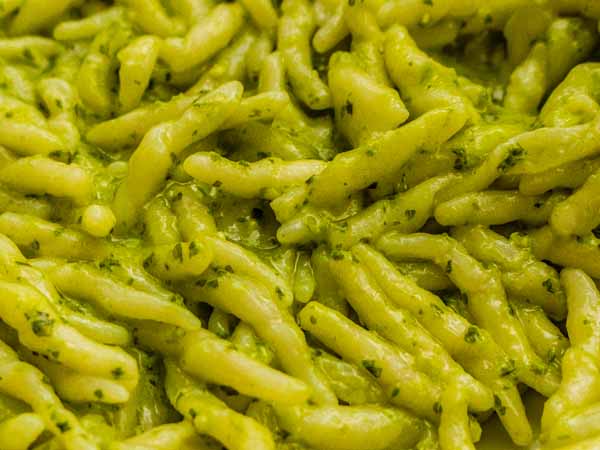
ITALY FOR THE BEACH LOVER
Italy boasts some of Europe’s most enchanting coastal resorts often characterized by picturesque cliffside villages and pristine beaches. Throw in fresh local cuisine, ancient ruins, unique architecture, and lots of culture, and young graduates might never want to return to the city.
The Cinque Terre
The Cinque Terre is one of Italy’s most popular coastal areas and for good reason. Set along the Ligurian Coast, this area consists of 5 fishing villages positioned along the most dramatic backdrop consisting of terraced land and buildings set between rugged mountains and a tranquil sea. Belonging to the Republic of Genoa, the area’s history dates back to the 11th century. While Monterosso al Mare, Vernazza, Corniglia, Manarola, and Riomaggiore are all famous for their breathtaking natural beauty, they each offer their own historical share whether it be through an ancient castle, a watchtower, or a 13th century church.
Designated a national park and protected marine area, the Cinque Terre is also a nature lover’s haven. Ancient foot-trails that connect the five villages provide for roughly 75 miles of hiking paths from which visitors can appreciate jaw-dropping panoramic views of the sea and colorful villages below. After a long day of hiking, there’s nothing better than to take a day to relax swimming and sunbathing by the sea. Under normal sea conditions, it’s also possible to travel by boat between the villages for stunning views from the sea.
While local-caught seafood plays an important role in the native cuisine, there are plenty of other dishes for the non-fish lover. Olives, lemons, and basil grown on hillside terraces are commonly used to flavor local dishes. Anchovies from Monterosso are a prized local delicacy recognized all over Italy. Foodies will enjoy trying the fried specialty in to-go cones and might not resist the urge to share on Instagram. Simple pasta lovers will find pesto from nearby Genoa, local focaccia, and a variety of other mouth-watering dishes to be the perfect choice. Any local dish can be paired with delectable white wines like the Cinque Terre DOC or Vermentino, produced from locally grown grapes.
Because of the Cinque Terre’s rugged terrain, the five villages are practically untouched when it comes to tourist infrastructure. Travelers will not find luxurious hotels but rather low-key accommodations; yet, what these charming villages might lack in amenities is easily compensated by their astounding natural setting and fascinating local culture.
Amalfi Coast
Unmistakably, one of Italy’s most conspicuous coastal gems is the Amalfi Coast. Nestled atop a 30 mile expanse of cliffside along the Tyrrhenian Sea, this impressive coastal area has lured the powerful and wealthy since Roman times. In recent decades, aristocrats, celebrities, and ordinary people alike continue to be equally attracted by the singular beauty of the Amalfi Coast’s shorelines. The Costiera Amalfitana, as it’s called in Italian, is comprised of 13 villages of which Positano, Praiano, Conca dei Marini, Amalfi, and Ravello are amongst the area’s main draws.
With a rich history that begins back in the 1st century BC, expanding through the time of the Amalfi Maritime Republic in the 9th century and up to the Middle Ages, the entire area is filled with a multitude of highlights of historical importance. In addition, different towns hold various cultural festivities throughout the year that celebrate music, the arts, religion, and other centuries-old traditions. Whether one chooses to stay in the quaint town of Amalfi, the colorful Positano, enchanting Ravello, or even Sorrento, which makes a great base for visiting the coast, visitors will be astounded by the sheer beauty of the area and each individual town.
Ravello, which is perched on a mountain, offers visitors extraordinary views of the coast. One must visit the romantic gardens and cloister at the 11th century Villa Cimbrone before heading to enjoy the jaw-dropping scenes from the infinity Belvedere terraced some 1,200 feet above the edge of the cliff. Villa Rufolo, another ancient villa from the 13th century along with its gardens, is especially worth seeing when the flora is in bloom. The 11th century cathedral and Moorish-Byzantine styled bell tower are also worth admiring.
The town of Amalfi reflects its heyday of the powerful maritime republic it once was. Young travelers will be mesmerized by the scene of the Duomo di Amalfi, the stunning 9th century Cathedral which features a mix of Arab, Norman, Gothic, Renaissance, and Baroque architectural styles. The Cathedral houses the crypt of St. Andrew whose remains were brought from Constantinople in 1206. Other ancient relics found within the Cathedral together with the artistic and architectural details are truly a sight to be seen. Once visitors have taken in the historical attributes of the town, Amalfi is the perfect place to slow down, enjoy a great meal, and people watch at one of the local restaurants or cafés. Getting lost in the labyrinth of tiny alleys is also a great way to explore this lovely town.
Of all the villages along the coast, Positano is perhaps the most widely publicized thanks in part to social media. With its stunning panorama of colorful buildings towering almost vertically against each other, and its emblematic majolica tiled dome, it’s no doubt Positano holds a special place for every traveler who visits this idyllic coast. The vibrant town is perfect to explore on foot strolling up and down the small streets that connect the town with the beach. Along the way, travelers will find shops, art galleries, and many cafés in which to try all things made with lemons. In fact, among this area’s most characteristic traits are the fragrant lemon groves. At almost every turn, there will be an array of lemon-scented products perfect as souvenirs, as well as limoncello, the lemon flavored liquor iconic of the area.
Graduates should designate at least a day to visit the island of Capri, one of the highlights of the Amalfi Coast. Capri’s magnificent natural beauty has inspired countless influential figures, from Roman emperors to today’s most renowned Italian designers, to own vacation properties around the island. Among sights one should take in are the spectacular Blue Grotto, the iconic Faraglioni, the ancient Villa Jovis (Emperor Tiberius’ vacation residence), and the chair-lift ride up to Monte Solaro for spectacular views of the open sea. Once the sun begins to set, young travelers will want to mingle with the rest of Capri’s jet-set dwelling around the piazzetta, the social heart of the island. Whether arriving on a private boat or public ferry, reaching Capri ensures a truly rewarding experience.
Offering a mix of history, delicious food, remarkable natural sceneries, and plenty of options to soak up some sun and sea, the Amalfi Coast is one of Italy’s most desired vacation spots perfect for rewarding young travelers who have been hard at work.
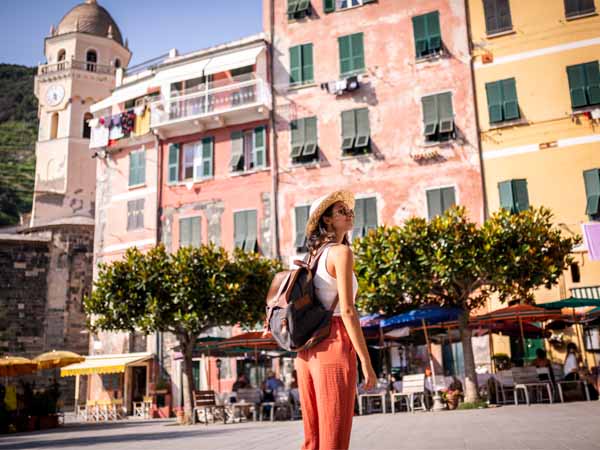
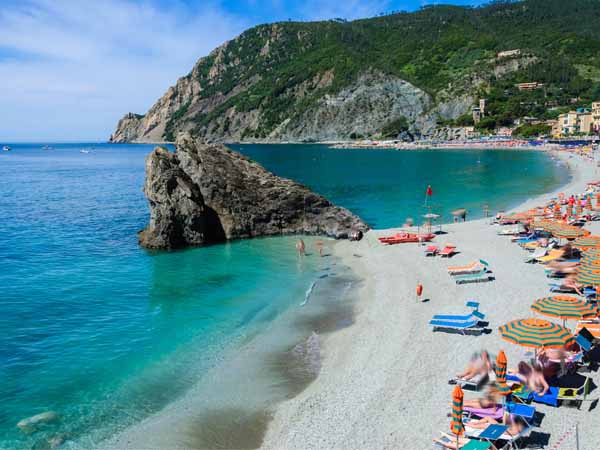
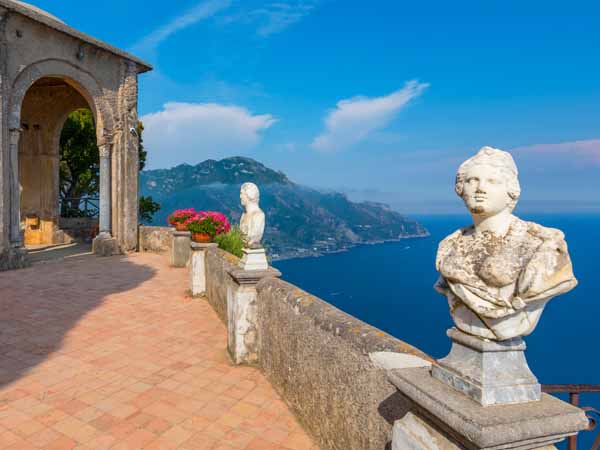
Travel can often be a positive life-changing experience; as the saying goes, “travel is the only thing you buy that makes you richer.” With over 3,000 years of history and art pouring out of almost every corner, combined with the Italian art of living la “Dolce Vita” (indulging in long conversation whether on hours-long meals, a coffee or gelato break, over a refreshing aperitivo, or during the simple evening “passeggiata”) Italy and its tantalizing culture offers young travelers a most gratifying experience.
Whether your new graduate wishes to focus their perfect Italy graduation getaway on a specific passion, or tailor a trip around multiple areas of interest, Italy’s varied historical, cultural, and physical landscapes are ready to welcome young visitors with the perfect balance of locations and activities. No matter what Italian destinations are at the top of their list, Trips 2 Italy is primed to assist with planning your young loved one’s perfect itinerary.
